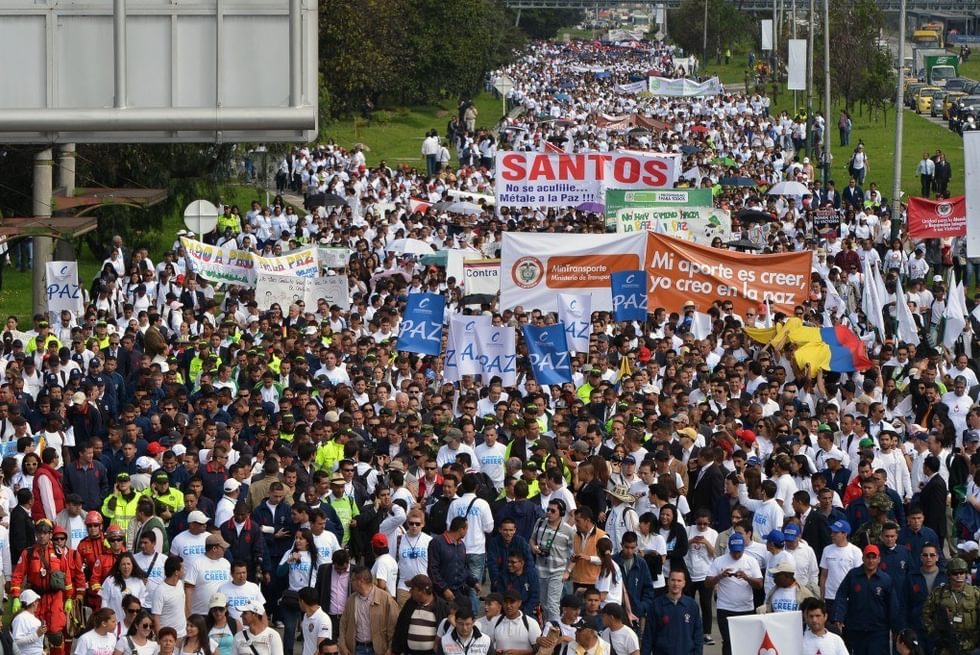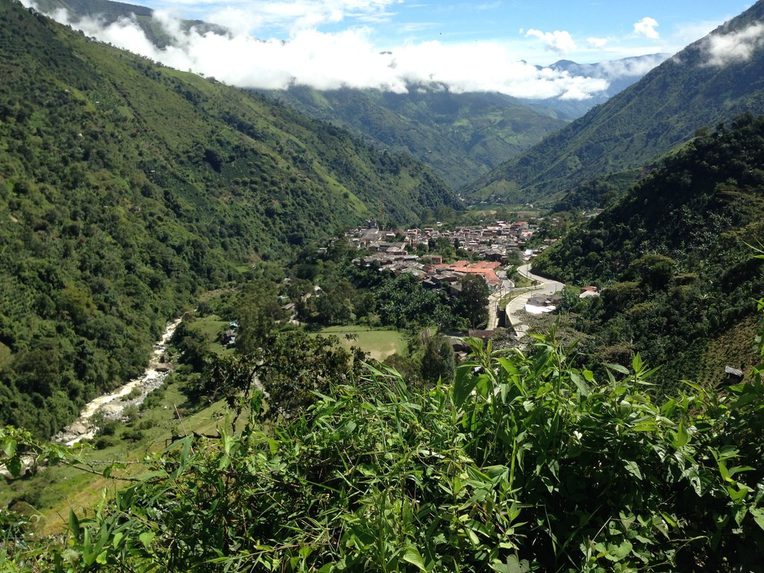Peace in Colombia? A View from San Andrés de Cuerquia
From the Series: The Colombian Peace Process: A Possibility in Spite of Itself
From the Series: The Colombian Peace Process: A Possibility in Spite of Itself


The Colombian government has been fighting against the Fuerzas Armadas Revolucianarias de Colombia (FARC) for fifty years and has been negotiating peace with them on and off for thirty-two. Is it different this time? To answer this question, it is critical to understand the roots of the war and what must change for there to be peace. The process for making peace making seems simple—the FARC should disarm and integrate into society and then there would be peace, right? Unfortunately, the situation is not so simple. The history of disarmaments and peace treaties in Colombia is even longer than that of the FARC, and yet war has ground on.
To understand why, the place to begin is in the periphery where the FARC has ruled for much of the past few decades. Take San Andrés de Cuerquia, a small rural municipality in the north of the department of Antioquia, just at the southern edge of the region known as Nudo de Paramillo. San Andrés, whose population has fallen as a consequence of displacement from around nine thousand in 1990 to six thousand today, has suffered greatly from the war. This suffering includes kidnappings, bombings, and assassinations perpetrated by the FARC, the Ejército de Liberación Nacional (ELN), and paramilitary groups. Since the peace talks in Havana started, the FARC has continued to launch attacks in different parts of San Andrés, killing a twenty-three-year-old teacher in front of his class, laying mines that killed two soldiers and wounded two children, and wounding two police in a grenade attack. Such violence is nothing new to Sanandresanos. In the late 1940s, before the birth of the FARC, it was the playground of guerilla groups led by Capitán Vidal Torres and Aparicio Escobar.
Why is San Andrés so violent, and how will a peace deal with the FARC change this? Since its foundation as a municipality in 1853, the Colombian government has been completely uninterested in the place and the welfare of its citizens. Until five years ago, for example, traveling from San Andrés to the departmental capital Medellín required walking eleven hours to Santa Rosa de Osos and then taking a bus to the capital. When a road was finally paved in 2009 between San Andrés and Santa Rosa de Osos, it was done not by the government but by EPM, the municipal electricity company from Medellín that needed access to its planned hydro-electric plant on the Cauca River. This lack of interest by the government resulted in neglect and a vacuum of authority in which grievances flourished along with groups, like the FARC, who could take advantage of the situation with little opposition. The critical observation here is that the FARC is not the cause of Colombia’s problems, but rather is one of the many dysfunctional consequences of the way the country has been governed.
The peace agreement being discussed includes important measures (some long overdue and some that may have an impact on the plight of Sanandresanos), such as agrarian reform, rural development, initiatives to encourage the participation of civil society, and a plan to increase the political representation of the periphery. But it is important to recognize that there is a long history of exactly such measures. The Colombian government has attempted and failed to promote agrarian reform since 1961. Since 1958, it has promoted rural civil society, initially by facilitating the creation of Juntas de Acción Comunal—voluntary local organizations that work together to provide public goods. These actions were followed by specific plans to build state authority in the regions, including the Plan Nacional de Rehabilitación of the 1980s and, most recently, the Plan Nacional de Consolidación. Although Nudo de Paramillo was a priority area for this latter plan, it did not include building a road to San Andrés.
Throughout all these measures, the neglect of the periphery, San Andrés included, has remained a constant: none have changed the political reality and the relationship between the state and its peripheral citizens. Attaining peace in Colombia is not simply a matter of the FARC signing the peace agreement and putting down their arms, and the government delivering on its promises, though all of this will help. Peace needs a fundamental reorientation of the relationship between the center and the periphery such that the state feels an obligation and has an incentive to cater to the problems and needs of those it has so long neglected. This is first of all about shifting power to the periphery, since Sanandresanos have learned the hard way that they cannot expect change to come from the benevolence of elites in Bogotá and Medellín. The peace agreement does mention power—the power of civil society and extra representation in the congress. So far, however, the agreement provides no guide as to whether these measures will actually solve the real problem. How can this extra representation in congress, possibly the most clientelistic political institution in the country, lead to real change? Why is it that at the moment those in congress do nothing to solve the problems of the periphery? A clue may come from the constitutionally mandated representation of Afro-Colombian communities, neither of whose current representatives are actually Afro-Colombian, though they did support President Santos’ reelection campaign. Will the same happen in Nudo de Paramillo?
These and many other examples suggest that at the moment, there is little reason to believe that peace with the FARC will solve the problems that have for so long beset San Andrés and the rest of peripheral Colombia. In consequence, there will be no real peace.